
Well good day to ya! Have a seat, take a load off, and a have a look around. Do you like steam power? Obselete technology? Are you old fashioned and dull? Well, you my friend are in the right place!This blog is for all those who are like me and aren't all that enthusiastic about the modern age. You can expect photographs, drawings, fictional stories about my favorite things, and much more.You certainly won't get politics, religion, or controversy from me! I steer clear of that type of thing.Anyway, please enjoy yourself and, do say hello if you are so inclined.
18 posts
Mrtheengie - Old Fashioned Tendencies - Tumblr Blog
I always appreciate seeing a bit of steam pop up on the ol' feed.

A drawing of a steam powered machine at a fair. This was done in generally miserable weather, so I didn’t spend a while doing it. I stopped as fat, globulous drops of water began falling from the sky.
Inktober day twelve. I admit I’m late with posting my art: I apologise.
@be-gentle-with-littluns-2
@wispo-sky
Talyllyn Railway No. 1 "Talyllyn"
Fletcher Jennings, 1864
I didn't expect to see Talyllyn that day, so it was a very pleasant surprise that, as my family and I relaxed at Abergynolwyn, she suddenly arrived with a few of the bogie coaches in tow. And, as you can see, she is absolutely resplendent in a livery inspired by the old GER.

Monsieur Estrade lives in my walls
Who's Estrade? I'm glad you asked! He was an engineer in the late 19th century who came up with and successfully built a concept for an 0-6-0 with 8 foot high driving wheels. At the time it was built, it was very brave and controversial, but it had several advantages. For one thing, all of its weight was on the driving wheels, and this would have allowed it to pull heavier trains at the same pace as Cramptons and other singles which were popular in those days. Unfortunately, the boiler was, according to one report, too small to keep up with demand, a consequence of the boiler being sandwiched between the driving wheels.
Anyway, besides drawing existing locomotives and engines, I like to make speculative ones of my own. Keep in mind, everything I do is based on existing practice.
So, what have I drawn here? Well, it is, for all intent's and purposes, a copy of Mr. Estrade's high speed locomotive, but with a twist. This machine runs on 7 foot gauge track, which allows the boiler to be larger, thus fixing any steaming troubles the real engine had.
I have made a TON of 7 foot gauge locomotives over the past year, and I've been slowly building a universe for them to live in. It's a huge passion project of mine, so I'm excited to start sharing it with the public.
Now this is just plain cute, ain't it?

Gravity Fowls ,,,,,

The Pride of Africa
South African Railways 25NC
This is a peak into my imagination. In my mind’s eye, I often picture wheels screaming round and round, crossheads pounding back and forth, and cab rides at high speed. Thoughts of steam fill my mind at all hours of the day, and my dreams at night. These things aren't just machines. They are so much more.
Steam inspires me, but the people who worked it inspire me even more. That's why I've chosen the 25NC. I've read a bunch of stories and watched videos put out by this old South African railway man. He was there until the end of steam in the 1990s. The stories he tells provide a wonderful insight into railway life, and the strong friendships the railway men formed with one another.
Now, about the picture. This was very fun and experimental. I'm not good and conveying motion, so I want to get better at it. I think I did alright with the wheels and rods. At first, I wanted to do the front end (the "business end," some might say), but I decided to take it easy on myself and do the back end. If I had colors at my disposal, I would set the picture during the night, and have the rods barely lit by the orange glow from the firebox. Maybe another time.
The Old Lady
Talyllyn Railway #2, “Dolgoch”
Fletcher, Jennings & Co., 1866

The Railway with a Heart of Gold
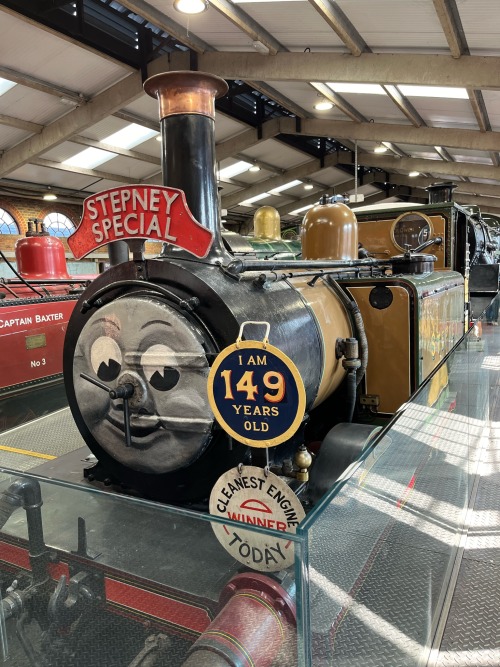
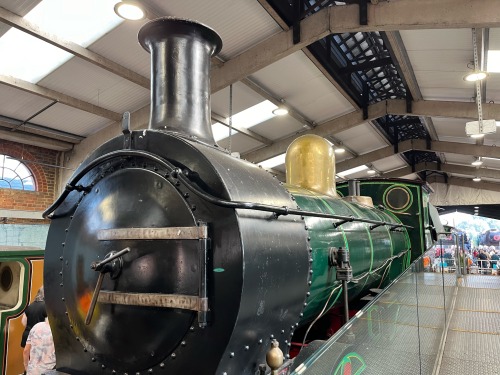
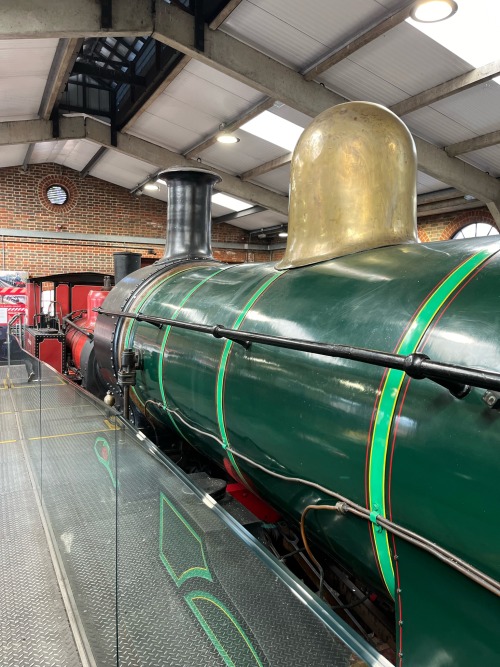
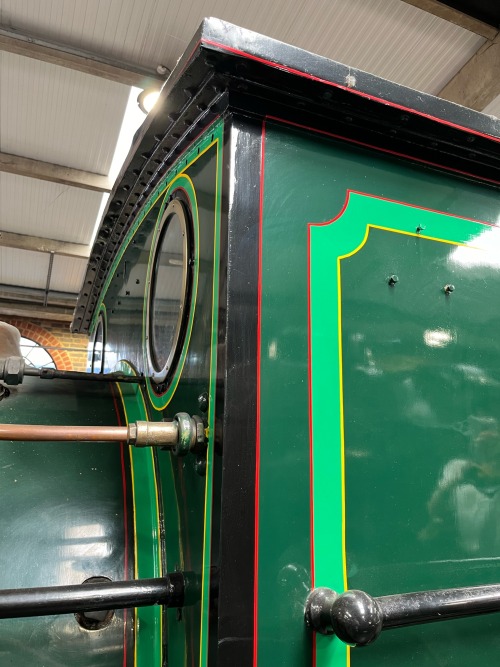
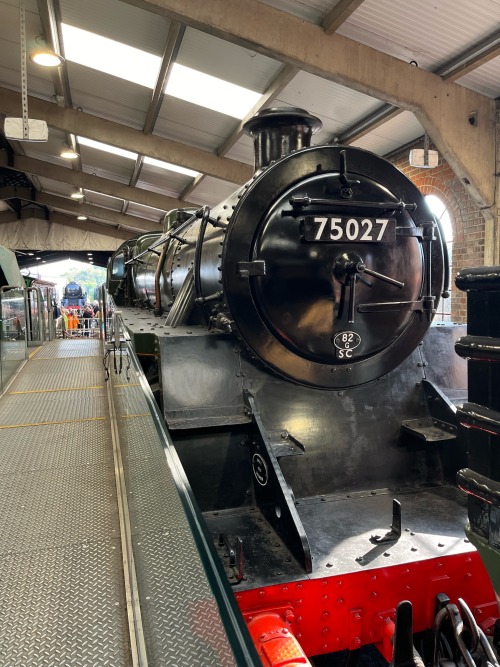
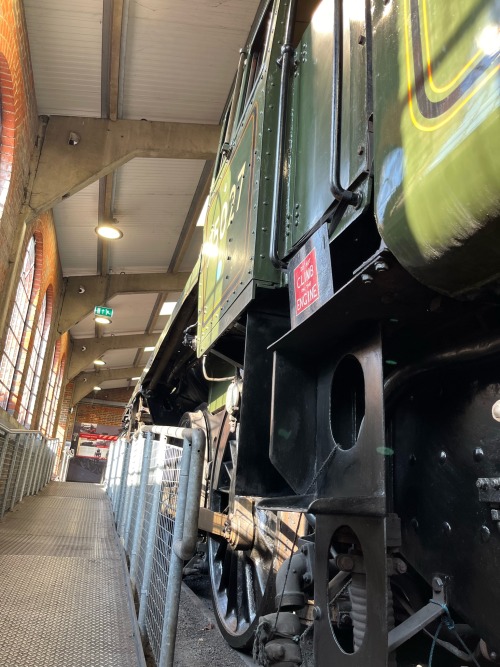
Further Adventures at Bluebell
The front half of the shed at Sheffield park was cleared out and turned into a bar for this event, so I didn’t get to see quite all of the engines. However, there were still a few in the back half, the main, sort of, museum bit of the shed.
Obviously Stepney and Captain Baxter were in there, as were the Wainwright C Class, the standard 4 75027, and a cute little LMS 0-6-0 that I didn’t photograph.







Beachy Head
Last month, the Bluebell Railway finished constructing their new Atlantic and were able to release it into traffic. It is a complete new build, yes, but unlike Tornado, it’s more of a replica, rather than a continuation, because this engine shares its name and number with one of the original H2 Atlantics from the LBSCR. The only part of the engine that wasn’t made from scratch is the boiler.
D.E. Marsh, the man who first designed these engines way back when, was educated on the GNR under Mr. Ivatt. Because of this, when Marsh went to become the LBSC’s chief mechanical engineer, he closely followed GNR practice. So, if you think the H2 resembles the famous C1 Atlantics on the GNR, you’d be right! They are extremely similar, and their boilers are nearly identical. Years ago, a spare GNR C1 boiler was discovered somewhere up north, and the Bluebell Railway, knowing everything I just described, jumped at the chance to get a hold of it and fill a gap in Southern Railway preservation.
Last week, I got the chance to visit the railway and ride behind the engine during the Bluebell Railway’s beer festival. I drank quite a few high quality brews, but the highlight was, of course, riding behind Beachy Head. The best part of it all? The Bluebell Railway operates a section of former LBSCR track, so Beachy Head, being an LBSCR engine, is on home turf. These engines would have traveled down this way in the old days, so I’ve been told.
Anyway, the Bluebell Line is an exceptionally friendly railway, and I recommend it to anyone who makes a trip to the south of England. It’s an easy day trip to make from London, with mainline trains running straight to the Bluebell Railway’s northern terminus at East Grinstead.
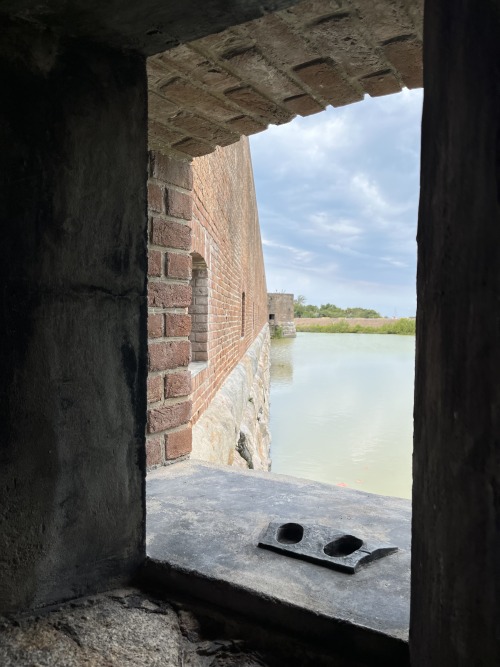








Fort Taylor, Key West
This was another place I visited while in Key West with my family. It was a magnificent old fort. Much of it was buried over the years thanks to various expansion projects, and several old cannons were used as rebar!
But, much of it has been dug out and sympathetically restored, revealing the beautiful brickwork and former gun ports. As you can see, they've got several of the old cannons and guns on display!
The fort was in use from the mid-19th century, right up until after WWII. Now that's some history for you!
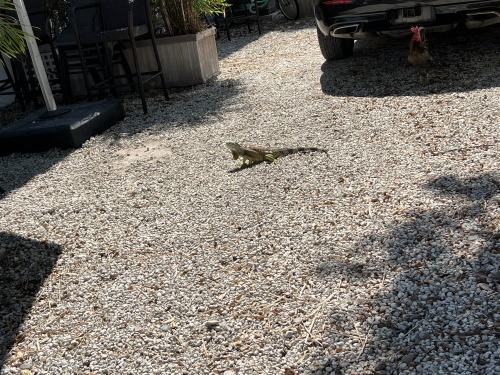
Frend
He's frend shaped
It would be remiss of me, with all the talk of "Woburn" this, and "Waterworks" that, to not post the link to this wonderful documentary! It was made by two urban explorers who go by The Proper People. They've seen a good many abandoned and rusted out hulks, but never a running engine like this!
They do a far better job of presenting the beauty of this engine than I can!
I hope you enjoy it as much as I did!







Key West Lighthouse and Keeper's Quarters Museum
Some of the exhibits contained inside the keeper's house in Key West.





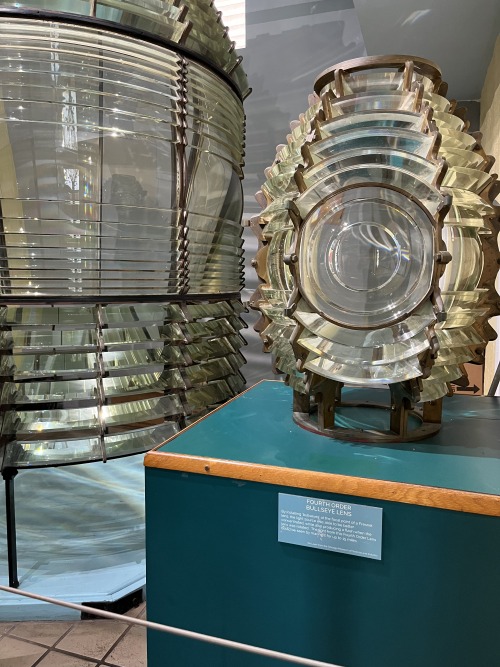

Lighthouse Tech
All of these pictures were taken at the Key West Lighthouse, a very well put together museum with a lighthouse that retains its original lens, as well as some remarkable exhibits in the keeper's house and the entrance building.
A link to the museum:
https://www.kwahs.org/key-west-lighthouse-keepers-quarters/
The pictures listed in the order they appear: 1. Key West Lighthouse; 2. The lighthouse's third order Fresnel lens; 3. Key West's colored sector glass pane; 4. A fifth order lens; 5. The twelve foot high, first order lens from Sombrero Key Lighthouse; 6. A fourth order lens; 7. A diagram showing some interesting information on lens sizes, the arrangement of the sections, and how far they could be seen.
Lighthouses are another interest of mine. I adore these things, and the remarkable engineering that went into them. If any building deserves to be described as a work of art, it's a lighthouse.
The Fresnel (pronounced Frey-nel) lenses are the ultimate blend of art, science, and engineering. They refract light over incredible distances from a comparatively small light source, and they are immeasurably beautiful, in my eyes. They are extremely intricate and very well put together, and if it weren't for the unstoppable march of "progress" and the extreme shortsightedness that seems to come with it, they would last a thousand years.
They come in many different shapes and sizes. Each was unique, as each one needed to fit the specific needs of the area. That, and they were all handmade. The different sizes were known as orders. First orders are on the upper end of the size spectrum, while sixth orders are on the lower end.
Some lighthouses received colored sections so that they could be identified from a distance, or to warn of obstructions. Many of these used sector glass panes in front of the lens, while on some, such as the Umpqua River Lighthouse, the lens itself was colored.
Lens rotation was accomplished via a clockwork mechanism. Some lenses rode on wheeled carriages, but these were not suitable for first order lenses. They were simply too heavy, there was too much friction, and the clockwork could not make them turn fast enough. So, the solution was to find a material for the lens to ride on that would be nearly frictionless. The solution they came up with was to fill a huge basin with mercury and place the lens and carriage on top of it. Mercury is very dense, so the lens actually floats on the surface of the mercury. It is so smooth that a person can rotate a three ton lens with their finger.
I might post some more photos from my trip to Key West. Stay tuned
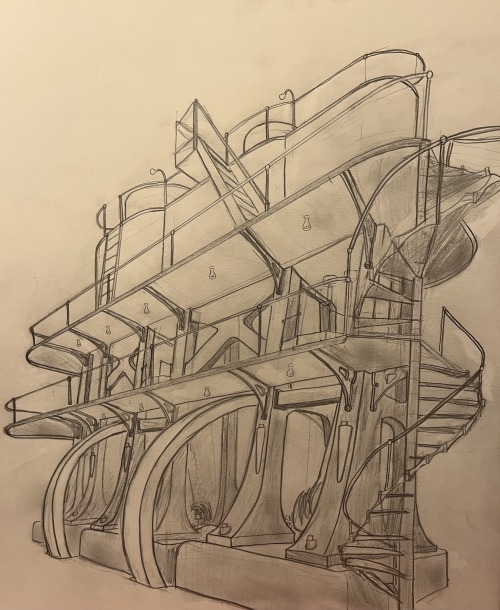
Chestnut Hill Waterworks, Boston
Besides working on big engines on occasion (well, once) I also draw them.
Those who are unfamiliar with waterworks steam engines may watch the videos and look at the photographs I've posted of the Woburn engine and say, "That's a big engine!" And you're right, she is a big engine, in comparison to us people! Really, she is only about four stories high from the bottom of the pumps to the steam cylinders
Four stories? That's, quite literally, as high as a building! That's not small at all! Well, when you take a look at other engines in big waterworks in big cities, she is VERY small! The engines in Buffalo, New York, if memory serves, are about eight stories, and the engines in Cincinnati are eleven stories, or 104 feet in height! Those, the Cincinnati engines, are the largest in the world, and their building is now a museum, as well as a functioning waterworks.
THIS engine, which I have drawn, is housed at the former Chestnut Hill Waterworks, now the Metropolitan Waterworks Museum, in Boston, a short distance from Woburn.
Now, you may recall, if you have been here before, that I said Woburn is entirely unique, and here I am now, listing off museums where you can go and see other big waterworks engines. Well, the thing about these museums is that the engines are cold and unmoving. They are in good condition, though, and could very easily run again, given just a few months of work (that is not at all an exaggeration, by the way, Woburn was returned to steam, from derelict condition, in about... half a year if memory serves). Ah well, it's one of those things. At least they're still here!
I spent long periods of time sitting on the top deck beside the cylinders, just watching the valves work. Goodness, I love this engine.
Us guys who were running her like to think that the ghost of Edward Pollard, the old chief engineer, was very happy with what we were doing.
Wanna know the best thing about Woburn? The engine is ALIVE! It can run! She is 100% unique in the United States. There is no other place in this country where you can go and see a running stationary steam engine in its original building, doing what it would have done a hundred years ago, more or less. Once abandoned, she has been made new again. And these folks need help!
If you live in the area, and even if you don't, write to the mayor! Urge him to keep the engine alive. It is crucial that we keep these things running so that people can come in and learn about them. You just don't get the same feeling when they're cold and stationary. When a steam engine is hot and running, it can speak for itself, and it's a lot easier to show people outside of our little group why we love them so much. It hasn't run since last year, and by golly it needs some exercise!
Follow the link below to their Facebook page.






Adventures at Woburn Waterworks. The best two days of my life.
Photo 1: Brass and Iron. Notice the modular construction of the steps. The main steam valve is in the top left. It has two wheels, one upstairs, and one at ground level.
Photo 2: Flywheel. The flywheel carries the momentum of the engine.
Photo 3: Low Pressure Side. The engine at Woburn is a compound, meaning it uses steam twice. The high pressure cylinder receives steam from the boiler. It exhausts into a receiver, i.e. a large tank between the cylinders, and the larger, low pressure cylinder uses this steam. A very efficient setup indeed.
Photo 4: Eccentrics. Unlike a locomotive or a ship's engine, a waterworks engine cannot reverse. It doesn't need to. So, why does each cylinder have two eccentrics? This engine is Corliss engine, or a four valve engine if you want to be more general. Each cylinder has four valves: two inlet, and two exhaust. It has two of each because most steam engines are double acting, meaning steam acts on both sides of the piston. These two sets of valves are each controlled by their own eccentric, allowing the engineers to make very precise adjustments to the valve timing should it become necessary. Also visible here is the belt which turns the fly-ball governor, yet another ingenious appliance from the steam age.
Photo 5: Down the Shaft. A view of the crankshaft, showing some of the gauges on the board. Since the engine was made a secret during the war, it has, very happily, retained ALL of its original gauges. Notice how the second on from the right reads "STEAM." Also notice the fact that the needle is not at zero...

This week's locomotive of the week is GNR No.990 "Henry Oakley". 990 was built in 1898 at Doncaster works and became the first 4-4-2 Atlantic type locomotive in the United Kingdom and carried the name of the railway's general manager. It was fitted with modified frames in 1919 and a superheater and piston valves in 1923. The engine was withdrawn in 1937 and placed in the LNER's railway museum at York. It was returned to service for short bursts in 1953, 1975 and 1977, though now resides at the National Railway Museum as object number 1975-7001.
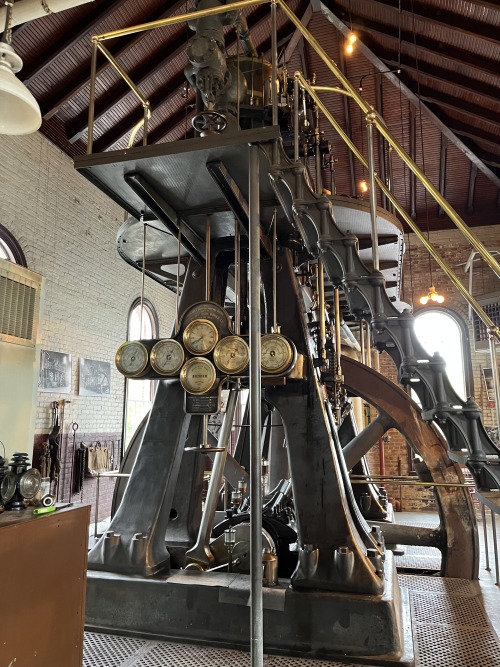
The Engine of Woburn Waterworks
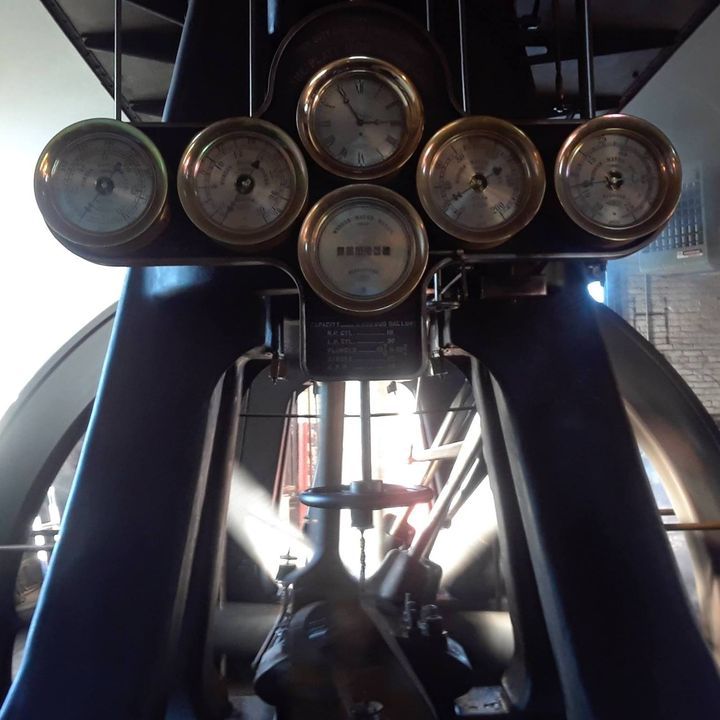
She was built and installed in 1908. The engine pumped water to the city of Woburn until 1932 when it was laid up in favor of a series of small electric pumps located around Horn Pond. At some point, the engine was named Louise by the chief engineer. During World War II, the chief and all the waterworks staff turned the engine into a very closely guarded secret so as to save it from the scrap drives.
It sat dormant until 2018 when it was restored and steamed, and it steamed again in 2023 for three weekends in May. The site is an active waterworks to this day, but this part has been turned into a museum.

LAMP
Taken at Woburn Waterworks in Massachusetts last year when I went to help out for a weekend and run the steam engine. More to come.
